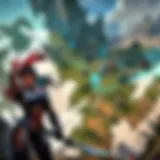Understanding Design Agents in Valorant Gameplay
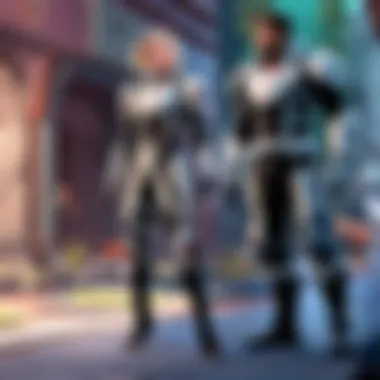

Game Overview
Intro
Valorant, a tactical first-person shooter developed by Riot Games, combines strategic gameplay with unique character abilities. Released in June 2020, it quickly gained traction in the gaming community due to its competitive nature and innovative design. Each player selects a unique agent, each with distinct skills and attributes, making the choice of design agents crucial to winning matches. Their abilities not only influence personal gameplay but also shape the entire team strategy, reflecting the importance of understanding their roles in both casual and competitive environments.
Prelude to Valorant
Valorant stands out among tactical shooters for its blend of traditional gunplay and agent-based abilities. The game takes place in a near-future Earth, featuring various maps inspired by real-world locations. Communication and coordination with teammates are vital, as each round's objective is to either plant the Spike or defuse it. With character-based gameplay, each match requires players to adapt, strategize, and leverage their agents' unique strengths to secure victory.
Game mechanics and objectives
Valorant's mechanics offer a rich platform for tactical gameplay. Before each match, players must select an agent from a diverse roster, each equipped with their own set of abilities—abilities that can lead to offensive advantages or defensive plays. The game operates on a round-based system where teams alternately attack and defend. Communication lies at the heart of good team play, promoting cohesive strategy formulation to win rounds.
Brief history of the game
Launched as a closed beta in early 2020, Valorant saw significant interest from the gaming community. Riot's commitment to combatting many issues present in other shooters, such as balance and cheating, positioned it uniquely in the market. The official release intensified its appeal, allowing for immense player engagement and a growing esports scene. Updates and patches continued to shape the meta with new agents and balance changes, reflecting a responsive development cycle.
Subsection: List of playable agents and their unique abilities
- Brimstone: He commands the battlefield with powerful incendiary abilities to control choke points.
- Sova: A scout with a focus on information gathering, using drones and sonar abilities to reveal enemy positions.
- Viper: Specializing in area denial, she can control the environment using toxic clouds and fire-based attacks.
- Jett: A fast-moving duelist who can dash and create space, making her formidable in one-on-one engagements.
- Sage: A support character with healing abilities, crucial for maintaining team health during battles.
"Understanding each agent's abilities is essential for developing effective team strategies. Each choice impacts not only individuals but also the synergy of the team as a whole."
As players gain familiarity with more agents, it becomes evident that synergy and understanding of design agents' nuances can significantly impact match outcomes. The interplay between agents creates a thrilling dynamic, especially in higher-level play, where strategy reigns supreme.
Understanding Design Agents
Design agents play a pivotal role within the Valorant gaming environment. Their impact extends beyond individual player abilities to shaping the overall strategy and style of gameplay. Understanding design agents is crucial for both casual gamers and competitive players seeking to enhance their gameplay. The nuances of these agents inform strategic decisions, team compositions, and ultimately, the outcome of matches.
Definition of Design Agents
Design agents in Valorant refer to the characters that players can select, each possessing unique abilities that contribute to gameplay dynamics. Each agent has a distinct role, categorized into Duelists, Controllers, Sentinels, and Initiators. These roles define their primary functions within the team, guiding players on how to effectively utilize their skills during matches. Understanding these definitions enables players to align their strategies with their chosen agent's strengths.
Distinct Characteristics
The distinct characteristics of design agents are fundamental to their effectiveness in a match.
- Role Specialization: Each agent is designed to excel in specific scenarios. For instance, Duelists are adept at engaging enemies, while Controllers focus on area denial, demonstrating the diversity of agent performance.
- Ability Diversity: Agents come equipped with a variety of abilities that serve different purposes. This includes offensive skills for damage dealing, defensive tools for protection, and utility abilities for team support.
- Visual and Lore Cues: Design agents are also defined by their unique visual identities and backstories. Each agent represents cultural backgrounds and distinct characteristics, enriching the game's narrative while fostering player connection.
- Synergistic Potential: Agents can create powerful combinations based on their characteristics. Understanding how these agents interact promotes strategic depth and enhances teamwork.
"The key to success in Valorant often lies in how well teams can synergize their agents’ abilities."
These characteristics underscore the importance of selecting and understanding design agents in shaping the Valorant experience. By grasping their definitions and traits, players can adopt more effective strategies, ultimately leading to better performance in both casual matches and competitive play.
Historical Context of Agents in Valorant
To appreciate design agents in Valorant, understanding their historical context is pertinent. This section outlines how the concept of agents has evolved and formats the design of characters within the game. Agents are not merely players' avatars; they embody complex mechanics that impact gameplay and team interactions.
Evolution of Agent Concepts
The concept of agents in multiplayer tactical shooters dates back several years. Early games, like Team Fortress 2, introduced character classes, each with unique skills. This notion served as a foundation for future titles, framing how developers design playable characters to satisfy both diverse playstyles and strategic team compositions.
In Valorant, agents represent a natural progression of this concept. They are equipped with unique abilities that shape engagement dynamics and influence map control. As the game progressed, the developers realized that a wider variety of abilities and roles could cater to different tactics, enabling new strategies and enhancing gameplay depth.
Notably, the differentiation of agents into categories—Duelists, Controllers, Initiators, and Sentinels—was instrumental. This classification allows for dynamic group compositions, encouraging players to adopt varied strategies as needed. The focus on agent uniqueness hones the importance of choice and strategy in competitive play.
Previous Titles and Influence
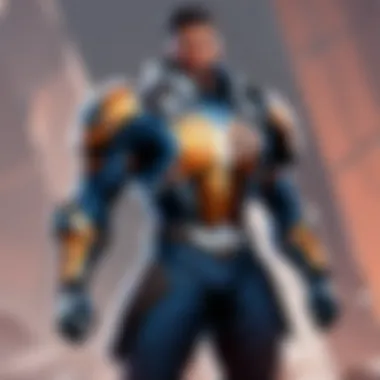

Valorant draws inspiration from numerous predecessor games. Titles like Overwatch and Counter-Strike: Global Offensive greatly influenced agent design. Overwatch's emphasis on unique hero abilities leads to deeper cooperation and team-based tactics. Meanwhile, Counter-Strike highlights the significance of roles without complex abilities, relying more on weapon skills and game awareness.
Incorporating aspects from both worlds, Valorant merges traditional shooter mechanics with a vibrant roster of agents. Each character brings special skills, from healing to deploying utility, which increases depth in strategic planning. The developers studied these influences carefully, aiming to create a balance between engaging mechanics and competitive integrity.
By acknowledging this historical context, players can understand the foundations for agent abilities and their strategic implications in both casual and competitive play. The thoughtful evolution of agent concepts reflects in the tactical diversity available to players today.
Key Traits of Effective Design Agents
Understanding the essential traits of effective design agents is crucial in Valorant. These agents significantly influence the flow of gameplay and the outcome of matches. Their abilities, roles, and interactions with teammates can create winning strategies or lead to defeat. Thus, grasping these traits helps players utilize agents to maximize their impact on the game.
Versatility in Gameplay
Versatility is a primary trait that every effective design agent must exhibit. An agent's ability to perform well in a variety of situations is invaluable. This means that they can adjust their playstyle to suit different scenarios, whether it be attacking, defending, or supporting teammates. For example, agents like Sage and Omen showcase different skills that allow them to adapt based on the shifting tide of battle.
- Flexibility: An agent that can switch between offensive and defensive roles instantly can change the momentum of the game.
- Skill Versatility: Agents with a range of abilities that target different aspects of the game, such as healing teammates or providing crowd control, offer an edge.
Players should recognize when to leverage this versatility, ensuring their agent can handle varied game situations effectively.
Synergy with Other Agents
Another vital aspect of an effective design agent is their synergy with other agents. Teamwork is paramount in Valorant, where individual skill must align with collective strategy. Agents must complement each other, creating a cohesive unit that can excel in various game scenarios.
- Combining Abilities: Strategic partnerships can enhance an agent's capabilities. For instance, pairing Jett with Omen allows for aggressive plays, where Jett can dash in while Omen provides cover with shadows.
- Team Composition: Teams should consider the strengths and weaknesses of their agents. A balance of roles—controllers, duelists, and sentinels—can optimize team performance.
Effective communication and understanding of each agent’s abilities will enhance overall team dynamics, making it essential for players to practice coordination.
Adaptability to Game Modes
The adaptability of design agents to various game modes—such as Spike Rush, Unrated, or Competitive—demonstrates their effectiveness. Players need to grasp how agents fit into the context of each game mode and utilize appropriate strategies to succeed.
- Mode-Specific Playstyle: Some agents thrive in specific modes. For example, agents with quick abilities can dominate in Spike Rush, where fast-paced decisions lead to rapid outcomes.
- Understanding Objectives: Each mode has unique objectives. Adapting strategy to these goals, like securing sites in Competitive matches, is critical.
Players should engage with the mechanics of their chosen agents to ensure optimal performance regardless of the mode they are in.
"A design agent’s effectiveness often hinges on their ability to adapt to the ever-changing dynamics of Valorant’s gameplay."
The Role of Design Agents in Team Dynamics
Design agents play a pivotal role in shaping team dynamics within Valorant. Their unique abilities and playstyles significantly influence how teams strategize, communicate, and position themselves in the game. By understanding the role of design agents, players can maximize their effectiveness and enhance the overall performance of their team.
Effective communication among team members is key in any competitive game, and design agents often serve as the catalyst for this interaction. Their abilities can both initiate conversations and dictate the flow of team play. Coordination becomes critical when utilizing design agents, as their potential often hinges on seamless collaboration with teammates.
Communication and Coordination
Communication is essential in Valorant, where every moment counts. Design agents are often at the forefront of strategic discussions. For example, an agent like Sage, who can heal allies, encourages teammates to maintain constant dialogue about health status and positioning. Properly utilizing Sage's abilities prompts players to coordinate their movements more carefully, fostering a team culture that values support and strategy.
Furthermore, agents with abilities that gather information, such as Sova, enhance the ability of teams to coordinate effectively. Sova’s Recon Bolt provides critical intel that helps teammates make informed decisions about attacks or defenses. This intelligence becomes a key talking point, allowing teams to react quickly and efficiently.
- Key Communication Strategies:
- Regular updates on enemy locations.
- Discussing ability cooldowns and status.
- Encouraging sharing of individual strategies based on agent roles.
“Good communication can turn the tide of battle, especially when design agents are involved.”
Strategic Positioning
Strategic positioning is a core element of play in Valorant. Design agents contribute uniquely in this aspect, enabling teams to employ tactics that leverage the strengths of each agent. For instance, a character like Jett can use her agility to create diversions or flank enemies, altering team formations effectively. This forces the opposition to adapt, often leading to openings for other team members.
Positioning with design agents also involves understanding the map and how different abilities can influence chosen spots. When a team knows how to use the abilities of agents such as Brimstone for smoke cover, they can position themselves more strategically to capitalize on enemies' vulnerabilities.
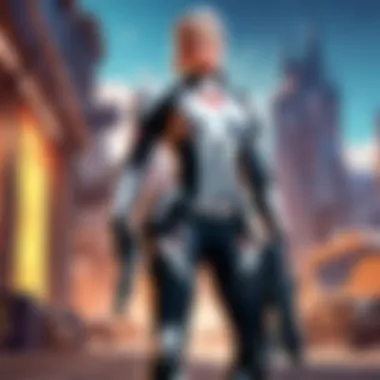

- Strategic Positioning Techniques:
- Utilizing smoke and cover for stealth approaches.
- Flanking through less traveled routes with agile agents.
- Creating distraction plans that disperse enemy focus.
Ultimately, the effective integration of design agents into team dynamics allows for synergy that can be the difference between victory and defeat. When teams recognize the strengths of their agents and create a cohesive strategy based on communication and positioning, their chances of success increase significantly.
Analysing the Impact of Design Agents on Game Strategy
The impact of design agents in Valorant cannot be overstated. They directly influence the strategies employed by teams across various gameplay scenarios. Understanding how these agents function and how their abilities can be leveraged is critical for both casual gamers and competitive players. This section explores the role of design agents in shaping offensive and defensive strategies, offering insights that can enhance gameplay effectiveness.
Offensive Strategies
When it comes to offensive strategies, design agents bring diverse capabilities that empower teams to attack effectively. Agents like Jett and Reyna are designed to facilitate aggressive plays. Jett, for example, possesses abilities that allow her to dash forward quickly, making her ideal for entry fragging. Her ability to create confusion among enemies is crucial, especially during pushes.
- Key Considerations in Offensive Strategies:
- Agent Selection: Choosing the right mix of agents can optimize the team's offensive strategy. A strategy involving Jett for speed, combined with Raze’s explosive potential, can secure early picks and control bomb sites.
- Utilization of Abilities: Effective communication about ability timing greatly enhances offensive maneuvers. For instance, having a Sova scout areas with his arrows can provide critical intel before executing an attack.
- Adaptation During Matches: Being adaptable is essential. Players must be aware of what enemies are doing and be prepared to change strategies mid-round.
The effectiveness of an offensive strategy also hinges on teamwork. Coordination is what allows agents to function in synergy, creating a multiplied effect that surpasses the sum of individual abilities.
Defensive Structures
On the flip side, design agents also play vital roles in defensive formations. Effective defense is as strategic as offense and requires solid understanding of agent skills. Agents like Sage and Cypher shine in this context, contributing unique abilities to hold sites and delay attacks.
- Components of Effective Defensive Structures:
- Area Denial: Agents like Killjoy utilize turrets and traps to deny enemy advances. These tools not only provide information but also slow down enemy pushes.
- Healing and Support: Sage’s ability to heal and revive teammates maintains the team's strength in a prolonged engagement. This can turn the tide in defensive scenarios, especially when under pressure.
- Intelligence Gathering: Cypher's spycam and traps enable teams to gather information about enemy movements, allowing for timely rotations and defending more effectively.
It is crucial for teams to communicate well when developing defensive strategies. Effective use of design agents in defense can significantly deter enemy advances and create opportunities for counterattacks.
"The key to successful defense lies in teamwork and flexibility in strategy with your design agents."
By focusing on how design agents enhance both offensive and defensive strategies, players can better understand their roles in broader gameplay contexts. This awareness not only improves individual performance but also strengthens team dynamics.
Common Strategies Utilized by Design Agents
Understanding the strategies employed by design agents is crucial for both casual and competitive players. These strategies not only enhance individual performance but also contribute significantly to overall team effectiveness. By mastering various tactics, players can better position themselves to take advantage of the dynamic nature of Valorant's gameplay.
Effective use of design agents can lead to decisive moments in matches. Their abilities often dictate the flow of the game, allowing teams to seize control of key areas on the map. This section covers two essential strategies: flanking maneuvers and zone control techniques.
Flanking Maneuvers
Flanking maneuvers involve players positioning themselves to attack opponents from unexpected angles. This tactic is effective because it can catch enemies off guard, disrupting their formation and forcing them into a defensive posture. Agents with abilities that enhance mobility, such as Jett or Omen, are particularly suited for flanking. They can traverse the map efficiently, enabling them to reach strategic locations quickly.
To successfully execute a flank, players should:
- Coordinate with teammates. Communication is key. Letting teammates know your intentions helps in planning the approach.
- Timing is critical. Choose the right moment to strike. Ideally, this should coincide with your team's engagement on the front lines to create a diversion.
- Utilize cover effectively. Stay out of sight as much as possible while moving to your flank position. This minimizes the chance of being spotted.
By employing flanking tactics, players can shift the momentum of a round in their favor and potentially lead their team to victory.
Zone Control Techniques
Zone control techniques are another pivotal strategy utilized by design agents. Controlling specific areas of the map can be decisive. This includes securing locations that provide strategic advantages, such as higher vantage points or choke points. Agents with abilities that can temporarily block or reveal enemy positions are valuable here, as they can dictate opponents' movements and limit their options.
Managing zones effectively involves:
- Establishing presence. Always ensure that your team is present in contested zones. This deters opponents from pushing forward and encourages them to rethink their strategies.
- Utilizing utility wisely. Agents like Brimstone with smoke and Raze with explosives can redefine how an area is approached. Employ these tools to carve out control and maximize the team's advantage.
- Adapting to changes. Be ready to adapt your strategy as the opponent's movements change. Good players must recognize when to reinforce control or withdraw to regroup.
In summary, mastery of common strategies such as flanking maneuvers and zone control can significantly enhance a team’s effectiveness in Valorant. Understanding these techniques will not only help you respond to the environment dynamically but also improve your ability to contribute to your team's success.
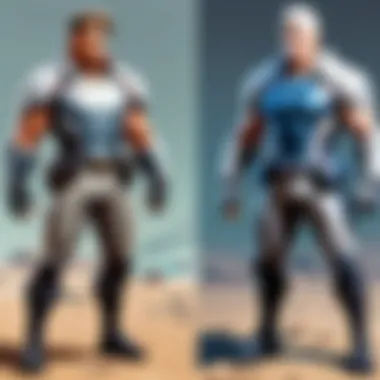

"Success in Valorant is often dictated by the strategic use of design agents. Their roles in maneuvers and zone control can turn the tide of battle." - Competitive Player
Mastering these strategies equips players with the tools necessary for success across both casual and competitive matches.
Evaluating Agent Abilities
Evaluating agent abilities in Valorant is crucial for understanding how these elements shape gameplay and strategy. Each agent has a unique set of abilities that can alter not only their performance but also the dynamics of a match. Knowing how to effectively utilize these abilities enhances both individual and team effectiveness. This evaluation encompasses various aspects, including the types of abilities, their intended purposes, and how they can be countered by opponents. A deep comprehension of these aspects allows players to maximize their agents' potential.
Ability Types and Their Functions
Agent abilities in Valorant can be categorized into three main types: Basic, Signature, and Ultimate. Each category serves distinct roles within the gameplay.
- Basic Abilities: These are available at the start of each round and can be purchased. They typically include utility tools that support team strategies by providing vision, control, or healing. For example, Phoenix's Curveball allows players to flash opponents temporarily, disrupting their vision.
- Signature Abilities: These abilities are unique to each agent and recharge over time. They often enhance gameplay versatility. For instance, Reyna’s Dismiss, which enables her to reposition quickly after getting a kill, is essential for aggressive plays and survival.
- Ultimate Abilities: These are powerful abilities that can significantly influence a match's outcome. They usually require gathering resources or completing objectives to activate. Killjoy’s Lockdown is an example, as it can incapacitate enemies within a large radius, providing a critical strategic advantage.
Understanding the distinct functions of these ability types allows players to strategize effectively. The synergy amongst these abilities can create unique tactics when combined with teammates’ options.
Counterplay Considerations
Counterplay is a fundamental aspect of competitive gameplay in Valorant. Evaluating counterplay considerations for agent abilities involves examining how to anticipate and respond to opponents' moves. Each ability can be countered by specific strategies, and knowing these countermeasures can be decisive.
- Understanding Ability Synergies: Recognizing how abilities interact is essential. For example, Jett's Tailwind can escape potentially lethal scenarios, but if coupled with Sage’s Slow Orb, her escape routes may be compromised.
- Terrain Awareness: The layout of the map can enhance or neutralize an agent's abilities. For instance, long sightlines can render a Sova’s Recon Bolt more effective, while tight spaces may reduce its utility.
- Communication: Informing teammates of enemies' abilities contributes to better gameplay. If players know that Omen's Paranoia is about to be deployed, they can position themselves accordingly.
- Adaptability: Players must adapt their strategies based on opponents' agent choices. For example, if the opposite team employs a heavy utility composition, playing reactive and using counter-abilities like Breach’s Fault Line can mitigate pressure.
Evaluating agent abilities and their potential counterplay is not just about individual skill. It is about mastering the complexity of teamwork and adapting strategies based on real-time information.
The Future of Design Agents in Valorant
The landscape of Valorant continues to evolve, and the role of design agents within it is crucial for both gameplay and community engagement. As the game matures, understanding how design agents will develop enhances a player’s strategic approach. This section discusses the anticipated trends in design and how player feedback influences future agent development.
Predicted Trends in Agent Design
The definition of what makes an effective design agent is likely to shift as new gameplay mechanics and player preferences emerge. Some key trends that may shape the future include:
- Increased Specialization: Future agents may possess unique abilities that cater to niche roles, such as environmental manipulation or tech-based enhancements.
- Diversity of Backgrounds: Future agents might draw from varied cultural and historical backgrounds, offering players unique narratives that resonate on a deeper level. This aspect can add richness to gameplay and enhance player attachment to the agents.
- Dynamic Abilities: There may be a move towards dynamic abilities that change based on the game’s state. For example, an agent's power could adapt to the number of players remaining or the round's economic status, providing a fresh layer of strategy.
- Sustainability of Play Styles: Updates may reflect a balanced approach encouraging more play styles, such as passive versus aggressive tactics. This ensures that multiple player strategies remain viable, fostering diverse gameplay experiences.
These trends suggest a future where design agents keep pace with the player base's skills and expectations. As designs evolve, they must remain fun and relevant to how players wish to engage with the game.
Community Feedback and Developer Response
The relationship between players and developers is pivotal in shaping Valorant's future. Community feedback not only helps in fine-tuning existing agents but also informs the creation of new ones. Some considerations include:
- Listening to Players: Developers often monitor community forums, such as Reddit, for insights on agent performance and balance. This ongoing dialogue leads to timely adjustments based on player experiences and sentiments.
- Beta Testing: Before the launch of new agents, beta testing often involves players to gather first-hand feedback. This engagement can pinpoint potential issues that may affect gameplay before they go live,
- Adaptation to Meta Changes: As the competitive meta shifts, developers are tasked to quickly respond with balance changes or new agents that can address identified gaps. Regular updates ensure that the game remains competitive and engaging.
- Community Events: Holding community events provides a platform for players to express their thoughts. Developers can incorporate this feedback into the development process, helping build a trusted relationship with their player base.
"Player feedback serves as a guide for developers to create agents that resonate with the community, ensuring continued interest and engagement."
The continuous back-and-forth between the community and developers is vital. It helps keep the game fresh and aligned with player expectations. By leveraging community insights, the designs of agents can evolve meaningfully, enhancing overall gameplay and satisfaction.
Understanding these aspects of design agents is essential for players. By being aware of predicted trends and the importance of community input, players can better adapt to emerging strategies and shifts in gameplay dynamics.
The End: The Significance of Design Agents
In Valorant, design agents play a crucial role in shaping both gameplay and team dynamics. They are not just characters with unique abilities; they serve as the core of strategic planning in each match. Understanding their significance goes beyond knowing abilities; it involves grasping how these agents interact within the greater tactical framework of the game. This article highlights various elements that contribute to the importance of design agents, underscoring their influence on gameplay.
Summary of Findings
Throughout the analysis, several key points emerged regarding the role of design agents:
- Strategic Implementation: Each agent brings a unique ability set that can influence game tactics. Whether offensive or defensive, the way agents are utilized can determine the outcome of encounters.
- Team Dynamics: Effective communication and coordination among team members using different agents can create powerful synergies. The interplay between agents can create various tactical advantages that might not be achievable with a non-strategic approach.
- Adaptability: Designing agents to fit various game modes enriches the overall experience. Players have to adapt their strategies based on agent selection, allowing for diverse gameplay styles.
"Design agents are key to creating a multidimensional play environment in Valorant. Their roles extend beyond mere character selection to affect all aspects of the game."
Implications for Players and Teams
The implications of understanding design agents are significant for both casual gamers and competitive players. Here are some considerations:
- Role Specialization: Knowing the strengths and weaknesses of each agent allows players to specialize, maximizing their impact during matches.
- Team Composition: Teams can better strategize their agent selection based on the strengths needed for specific maps or opponent teams. This can create a tailored approach that enhances potential success.
- In-game Flexibility: Familiarity with different agents encourages players to switch roles mid-game, facilitating adaptability in response to evolving dynamics. This flexibility can be critical in high-stress competitive environments.
